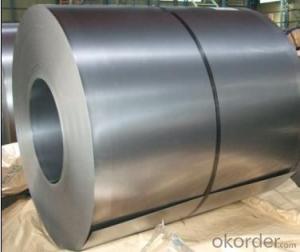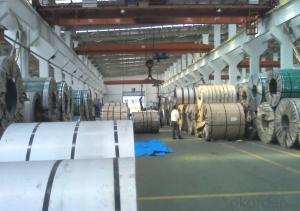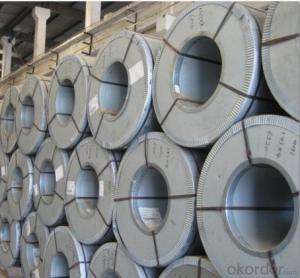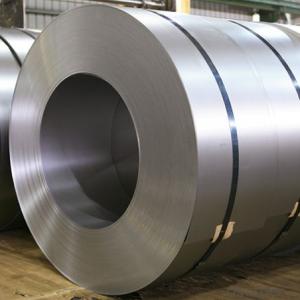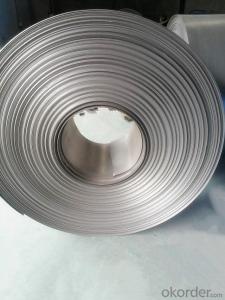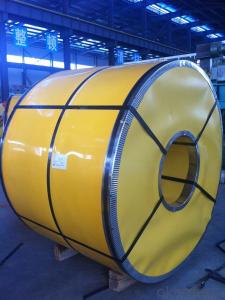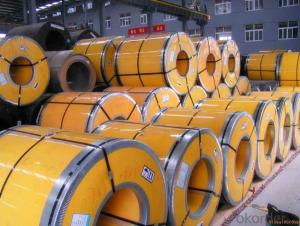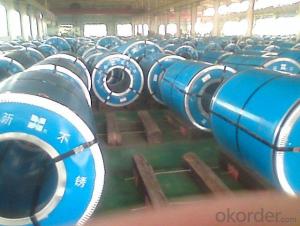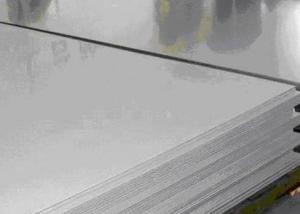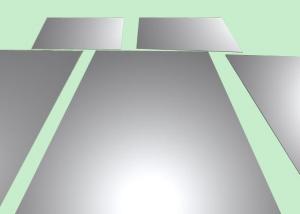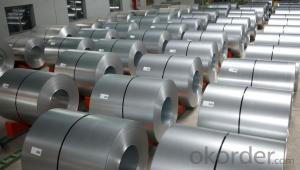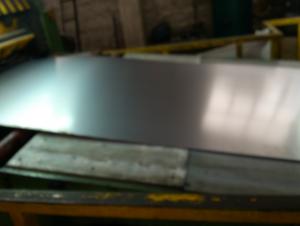304 SERIOUS HOT ROLLED STAINLESS STEEL COILS/SHEETS
- Loading Port:
- Shanghai
- Payment Terms:
- TT OR LC
- Min Order Qty:
- 100 m.t.
- Supply Capability:
- 20000 m.t./month
OKorder Service Pledge
OKorder Financial Service
You Might Also Like
Quick Details
| Grade: | 2B | Standard: | JIS,AISI,GB | Length: | as customers' requested |
| Thickness: | 2.5mm;3.0mm;4.0mm or as required | Width: | 485mm,510mm,600mm or as required | Place of Origin: | Shanxi China (Mainland) |
| Brand Name: | CNBM | Model Number: | 201 | Type: | Coil |
| Application: | Decoration,Boiler Plate,Chemical Industry,Container plate,ship | Certification: | SGS,ISO | Color: | natural color |
| Available Finish: | 2B/BA/8K/No.4/SB/HL | Edge: | slit edge and mill edge | Features: | accurate dimensions |
| Manufacture technology: | cold drawn,pickling, hot rolled and cold rolled | DDQ: | slivery bright surface | Quality: | high quality Hot rolled stainless steel coil 201 |
| Stock: | Always in stock | Item: | Hot rolled stainless steel coil 201 |
Packaging & Delivery
| Packaging Detail: | Standard export packing or as customer's requirement Hot rolled stainless steel coil 201 |
| Delivery Detail: | In 15 days |
Specifications
Hot rolled stainless steel coil 201
Width:485mm,510mm,600mm or as required
Thickness: 2.5mm;3.0mm;4.0mm or as required
Product Description
Stainless steel coil; stainless steel cold rolled coil;201 stainless steel coil; stainless steel coil
A. stainless steel coil
B. with competitive prices and fast delivery
C. High quality
Tisco 201 stainless steel coil
Thickness: 2.5mm;3.0mm;4.0mm or as required
Width: 485mm,510mm,600mm or as required
Length: As required
Material:201
201 stainless steel coil chemical composition
201 stainless steel coil | ||||||||
Grade | Chemical composition | |||||||
C | Si | Mn | P | S | Ni | N | Cr | |
% | % | % | % | % | % | % | % | |
201 | ≤0.15 | ≤0.75 | 5.5~7.50 | ≤0.060 | ≤0.030 | 3.50~5.50 | ≤0.25 | 16.00-18.00 |
201 stainless steel coil physical property
Physical Property | ||||
density | Strength of extension | yield strength | elongation | modulus of elasticity |
g/cm³ | psi | psi | % | psi |
7.93 | 100000-180000 | 50000-15000 | 55-60 | 29000000 |
Item | CNBM 201 stainless steel coil |
Technical | Hot rolled and cold rolled |
Standard | ASTM A240,GB/T3280-2007,JIS4304-2005,ASTM A167,EN10088-2-2005,GB/T3280-2007,EN10095-99,JIS4312,etc |
Material | 201,202,304,304L,309S,310S,316,316L,316Ti,430 |
Surface | NO.1,2b,4K,8k,HL,mirror finish |
Thickness | 0.3-100mm |
Width | 500-2000mm |
Price term | FOB,CFR,CIF |
Application | Stainless steel coil applies to construction field, ships building industry, petroleum, chemical industries, war and electricity industries, food processing and medical industry, boiler heat exchanger, machinery and hardware fields. Stainless steel coil can be made according to the customer’s requirements. |
Contact | If you have any question, please feel free to contact me. |
- Q: Can stainless steel strips be used in the semiconductor industry?
- Yes, stainless steel strips can be used in the semiconductor industry. Stainless steel is known for its excellent corrosion resistance, high strength, and durability, making it a suitable material for various applications in the semiconductor industry. Stainless steel strips are often used in the fabrication of semiconductor equipment, such as chambers, wafer carriers, and process tools, where they can withstand harsh environments and high temperatures. Additionally, stainless steel strips can be precision-engineered to meet specific requirements, ensuring dimensional accuracy and reliability in semiconductor manufacturing processes.
- Q: What are the different cutting methods for stainless steel strips?
- When cutting stainless steel strips, there are several methods available depending on specific requirements and desired outcomes. Some commonly used methods include: 1. Shearing: This traditional method involves using sharp blades to cut through the stainless steel. Shearing is ideal for thinner strips, providing a clean and straight cut. However, it may not be suitable for thicker or harder stainless steel. 2. Laser cutting: Laser cutting is a precise and efficient method that utilizes a laser beam to cut through the stainless steel. It is commonly used for intricate and complex shapes, offering high levels of accuracy and control. Laser cutting is suitable for both thin and thick stainless steel strips. 3. Waterjet cutting: This method utilizes a high-pressure stream of water mixed with an abrasive material to cut through the stainless steel. It is a versatile method that can be used for various thicknesses and shapes. Waterjet cutting provides clean and precise cuts without causing heat distortion or altering the properties of the stainless steel. 4. Plasma cutting: Plasma cutting involves using a jet of ionized gas to cut through the stainless steel. It is a fast and efficient method that can be used for both thin and thick strips. Plasma cutting is particularly suitable for stainless steel strips with high alloy content or hardening properties. 5. Saw cutting: Saw cutting utilizes a rotating saw blade to cut through the stainless steel. It is a versatile method that can be used for various thicknesses and shapes. Saw cutting provides fast and efficient cuts, but it may not be as precise as other methods and may cause some burring or rough edges. Overall, when selecting a cutting method for stainless steel strips, factors such as material thickness, hardness, desired precision, and project requirements should be carefully considered. It is advisable to consult with experts to determine the most suitable cutting method for a specific application.
- Q: What are the applications of 111 stainless steel strips?
- Some applications of 111 stainless steel strips include manufacturing of automotive components, electrical appliances, kitchen utensils, and construction materials. Additionally, they are used in the production of fuel tanks, chemical containers, and heat exchangers due to their corrosion resistance and strength properties.
- Q: How do stainless steel strips resist stress corrosion cracking?
- Stainless steel strips resist stress corrosion cracking (SCC) due to their unique composition and properties. The primary factor that enables stainless steel to resist SCC is the presence of chromium. Chromium forms a passive oxide layer on the surface of the steel, which acts as a protective barrier against corrosive environments. This passive oxide layer, also known as the chromium oxide film, is self-repairing and continually forms even if it gets damaged or scratched. It effectively prevents the penetration of corrosive agents, such as chlorides, into the material, thereby inhibiting the initiation and propagation of stress corrosion cracking. Furthermore, stainless steel strips also contain nickel, molybdenum, and other alloying elements, which contribute to their enhanced resistance to SCC. Nickel improves the stability of the oxide layer and increases the overall resistance to corrosion. Molybdenum, on the other hand, enhances the material's resistance to pitting and crevice corrosion, which are often associated with SCC. The microstructure of stainless steel also plays a crucial role in its resistance to SCC. Stainless steel strips are typically engineered to have a fine-grained microstructure, which further enhances their resistance to corrosion. Fine grain size reduces the susceptibility to intergranular corrosion, a common precursor to stress corrosion cracking. In addition to the material composition, surface treatments and finishes can also contribute to the resistance against SCC. Passivation, pickling, or electropolishing processes can remove contaminants and enhance the formation of the protective oxide layer on the surface of the stainless steel strips. Overall, stainless steel strips resist stress corrosion cracking through the combined effects of the chromium oxide film, alloying elements, fine-grained microstructure, and appropriate surface treatments. These factors work together to provide excellent corrosion resistance, making stainless steel strips a reliable and durable material choice for various applications.
- Q: Are stainless steel strips suitable for architectural facades?
- Yes, stainless steel strips are suitable for architectural facades. They offer a sleek and modern appearance, excellent durability, and resistance to corrosion, making them an ideal choice for both indoor and outdoor applications. Additionally, stainless steel can be easily manipulated into various shapes and sizes, allowing for creative and unique designs in architectural facades.
- Q: Are stainless steel strips resistant to stress corrosion cracking?
- Yes, stainless steel strips are generally resistant to stress corrosion cracking due to their high levels of chromium and nickel content, which form a protective oxide layer on the surface, preventing the penetration of corrosive agents.
- Q: Can stainless steel strips be cut or shaped?
- Yes, stainless steel strips can be cut and shaped. They are highly malleable and can be easily manipulated using various cutting and shaping tools, such as shears, plasma cutters, or laser cutting machines.
- Q: How do stainless steel strips resist erosion?
- Stainless steel strips resist erosion due to their high levels of chromium and nickel content, which form a protective oxide layer on the surface. This oxide layer acts as a barrier, preventing corrosive substances from reaching the underlying metal and thus protecting the stainless steel from erosion.
- Q: Can stainless steel strips be used in defense applications?
- Yes, stainless steel strips can be used in defense applications. Stainless steel is known for its strength, durability, and resistance to corrosion, making it an ideal material for various defense-related purposes. It can be used to manufacture components for military vehicles, such as armor plating, brackets, and reinforcements, due to its ability to withstand high impact and provide protection against ballistic threats. Additionally, stainless steel strips can be utilized for fabricating weapon systems, ammunition, and equipment used by defense forces. The material's resistance to heat and corrosion also makes it suitable for applications like missile casings and jet engine components. Thus, stainless steel strips are widely used in defense applications due to their superior mechanical properties and reliability.
- Q: Are stainless steel strips resistant to sulfuric acid corrosion?
- In general, stainless steel strips possess resistance against corrosion caused by sulfuric acid. Chromium, found in stainless steel, creates a protective oxide layer on the surface when exposed to air or moisture. This oxide layer acts as a barrier, effectively preventing direct contact between the acid and the steel, thus averting corrosion. Nevertheless, the degree of corrosion resistance can fluctuate based on the stainless steel grade and the concentration and temperature of the sulfuric acid. In environments with highly concentrated and hot sulfuric acid, certain stainless steel grades may undergo corrosion. It is crucial to refer to the manufacturer's specifications and guidelines to ensure the appropriate stainless steel grade is chosen for the specific application involving sulfuric acid.
Send your message to us
304 SERIOUS HOT ROLLED STAINLESS STEEL COILS/SHEETS
- Loading Port:
- Shanghai
- Payment Terms:
- TT OR LC
- Min Order Qty:
- 100 m.t.
- Supply Capability:
- 20000 m.t./month
OKorder Service Pledge
OKorder Financial Service
Similar products
Hot products
Hot Searches
Related keywords
